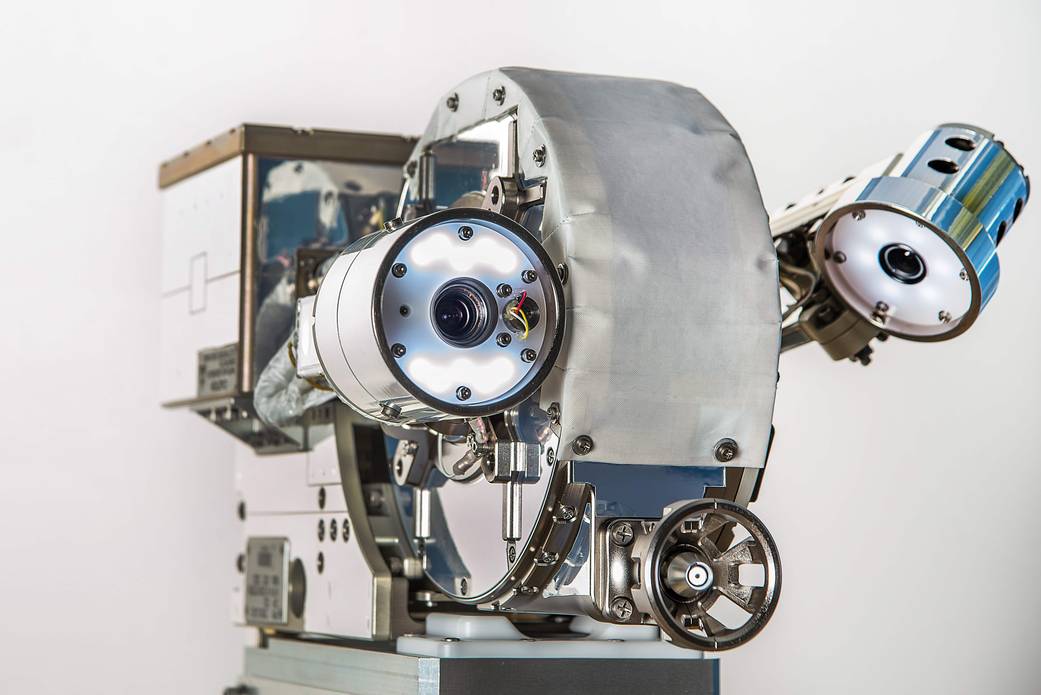As its name implies, VIPIR is a mechanical set of robotic eyes that features a small, articulating borescope (1.2mm diameter). Similar to the cameras used for endoscopic surgeries and colonoscopy, the borescope camera only has a 100-degree field of view and a 0.05-megapixel resolution, but its small size provides many benefits that make up for its optical limitations. Because it is so petite, the borescope can maneuver through small spaces, providing a thorough look at a satellite without damaging the spacecraft’s sensitive components. VIPIR also has a secondary onboard camera that features an 8-24mm optical zoom lens, which is perfect for viewing spacecraft from a distance as close as 0.02 inches.

While VIPIR works from space, the robot’s operators are located safely on the ground or within a nearby space station. These joystick controlled spacebots provide NASA technicians with the ability to inspect a spacecraft such as satellites for damage due to micrometeoroid strikes. It also can be used to troubleshoot mechanical or physical issues with spacecraft and even perform remote repair jobs with the VIPIR robot functioning as the operator’s eyes in the sky.
The VIPIR system has been successfully tested by NASA on the International Space Station and is the second stage of operational testing. The robot is being prepped for its next mission — NASA’s Robotic Refueling Mission (RRM). In this mission, VIPIR will team with up Dextre, Canada’s two-armed repair robot. The pair will work together in a demonstration of how robots can be used effectively to repair and refuel satellites and other craft in space.
Editors' Recommendations
- Space station’s new robotic arm springs to life
- How to watch SpaceX Crew-4 astronauts launch to ISS
- NASA footage shows SpaceX Crew-4 training for ISS mission
- Watch NASA’s Crew-3 astronauts share highlights of their ISS mission
- How to watch NASA’s first space tourism launch to the ISS today




